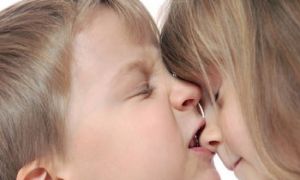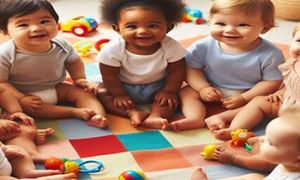Gardner proposed a theory of multiple intelligences that suggests there is more than one intelligence – He considers children and adults to be individuals who all have skills and areas that we enjoy and excel at and that these fit into our major intelligence.
When you are good at a task, you enjoy completing that task or similar tasks and so are more likely to continue to develop and build on your skills in that area and become even better. Gardner saw the arts and creativity as playing major roles in children’s learning. Children are able to explore many cognitive concepts through their play and creative explorations.
About
Howard Earl Gardner (born July 11, 1943) is an American developmental psychologist He is best known for his theory of multiple intelligences.
Multiple Intelligences
This theory states that each person has different ways of learning and different intelligences they use in their daily lives. While all people possess some level of each intelligence, most will experience more dominant intelligence which impacts the way they learn and interacts with the world around them. These multiple intelligences can be nurtured and strengthened based on each person's style of learning:
- Verbal-Linguistic Intelligence - Well-developed verbal skills and sensitivity to the sounds, meanings and rhythms of words.
- Mathematical-Logical Intelligence - The ability to think conceptually and abstractly, and the capacity to discern logical or numerical patterns.
- Musical Intelligence - The ability to produce and appreciate rhythm, pitch and timbre.
- Visual-Spatial Intelligence - The capacity to think in images and pictures, to visualize accurately and abstractly.
- Bodily-Kinesthetic Intelligence - The ability to control one's body movements and to handle objects skillfully.
- Interpersonal Intelligence - The capacity to detect and respond appropriately to the moods, motivations and desires of others.
- Intrapersonal Intelligence - The capacity to be self-aware and in tune with inner feelings, values, beliefs and thinking processes.
- Naturalist Intelligence - The ability to recognize and categorize plants, animals and other objects in nature.
- Existential Intelligence - The sensitivity and capacity to tackle deep questions about human existence, such as the meaning of life, why we die and how we got here.
Multiple Intelligence and Learning Styles
As teachers and educators begin to understand learning styles more effectively, using multimedia plays an important role in different types of learning preferences that one person has and has the potential to impart knowledge to a group of children.
- Visuals -Visual media help students acquire concrete concepts, such as object identification, spatial relationship or motor skills.
- Printed words -While the printed word is the most common method of dispensing information, some argue that audio is superior.
- Sound - Sound media offer a stimulus for sound recognition or recall. Audio narration is a useful tool for students who struggle with reading.
- Motion - Motion depicts human - performance so that learners can copy the movement. This kinesthetic method can be essential for understanding some subject matter.
- Colour -Choices on colour display are required if it is essential to what is being learned (such as, the sky is blue).
- Realia - Realia teaches cognitive and motor skills with objects. Realia can be used with individuals or groups, depending on the situation. Realia may be used to present information realistically, or with the way learners internalize information.
- Instructional Setting - Design must include what materials are being used, as well as the environment in which it is to be taught. Printed materials should be individualized to allow the learner to set the pace.
- Learner Characteristics - Teaching models must consider learner characteristics, as media may be interpreted in various ways by different learners. Research has not provided definitive methods in matching the media most suitable for types of learners.
- Reading ability - Pictures aid learning for poor readers who understand spoken words rather than printed words; good readers can control the pace, and print allows for easier review.
- Categories of Learning Outcomes - Categories ranged from three to eleven and most include some or all of Gagne's (1977) learning categories: intellectual skills, motor skills, verbal information, overall attitudes and use of cognitive strategies.
- Events of Instruction - Teachers have to choose the external events which support internal learning with events of instruction. This occurs in the planning stage and before selection of appropriate media.
- Performance - It is important for students to perform tasks that demonstrate learning and retention. The elicited performances can be categorized by type: covert, overt, motor, verbal, constructed and select. Media should be selected to correspond with the desired outcome.
Gardner’s Theories in Practice
- Learning occurs in social settings and contexts.
- Instead of educators being the sole facilitator of learning, children should be encouraged as ‘peer mentors’ assisting each other to learn and develop skills.
- As educators, we need to provide learning opportunities for children that reflect their ‘intelligence’ and learning style.
- Educators should be able to assist children to transfer skills they have to learn and develop into other areas
- Provide children with a wide range of learning opportunities.
- Educators should present material in ways that take into account the different bits of intelligence, rather than focusing on the traditional verbal and mathematical ways of teaching.
References:
What Are Multiple Intelligence and How Do They Affect Learning, Eve Herndon, Cornerstone University, 6 February 2018
Child Theorists and Their Theories in Practice, Aussie Childcare Network, 06 July 2018






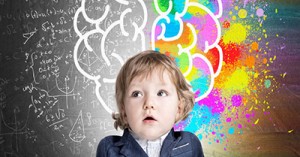
 Toddlers have a greater understanding of the world around them by this stage. Their cognitive development (also known as intellectual development and thinking skills) continues
Toddlers have a greater understanding of the world around them by this stage. Their cognitive development (also known as intellectual development and thinking skills) continues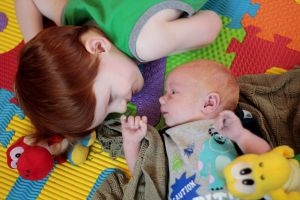 Infants begin to develop trust when parents begin to fulfil their needs. Such as changing an infant's nappy when needed, feeding on request and holding
Infants begin to develop trust when parents begin to fulfil their needs. Such as changing an infant's nappy when needed, feeding on request and holding Beginning at birth the construction of thought processes, such as memory, problem solving, exploration of objects etc, is an important part of an infant’s cognitive
Beginning at birth the construction of thought processes, such as memory, problem solving, exploration of objects etc, is an important part of an infant’s cognitive Toddlers want to do more on their own and do not like it when you begin to establish limits on their behaviour. Tantrums can become
Toddlers want to do more on their own and do not like it when you begin to establish limits on their behaviour. Tantrums can become Your preschooler is now able to focus their attention more accurately and is less influenced by distractions. The intensity of questions increase as your child
Your preschooler is now able to focus their attention more accurately and is less influenced by distractions. The intensity of questions increase as your child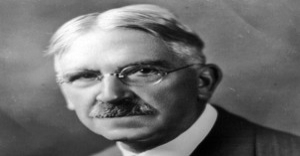 John Dewey is often seen as the proponent of learning by doing – rather than learning by passively receiving. He believed that each child was active,
John Dewey is often seen as the proponent of learning by doing – rather than learning by passively receiving. He believed that each child was active, Toddler advance and gains new skills in Gross Motor Development milestones achieved throughout earlier years. Co-ordination and challenges that could not be performed before such
Toddler advance and gains new skills in Gross Motor Development milestones achieved throughout earlier years. Co-ordination and challenges that could not be performed before such Erik Erikson developed a psychosocial theory to understand how we each develop our identities through eight stages of psychosocial development from infancy to adulthood. The
Erik Erikson developed a psychosocial theory to understand how we each develop our identities through eight stages of psychosocial development from infancy to adulthood. The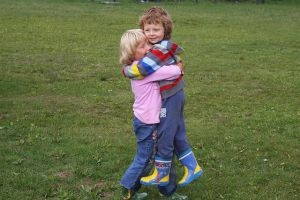 At this point preschoolers begin to interact effectively with others. Play becomes more innovative and organized and “boyfriend” or “girlfriend” begins to emerge. Preschoolers have
At this point preschoolers begin to interact effectively with others. Play becomes more innovative and organized and “boyfriend” or “girlfriend” begins to emerge. Preschoolers have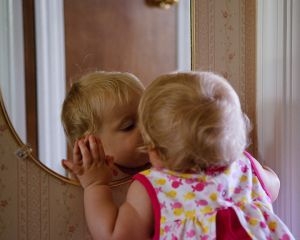 From now, babies begin to identify and respond to their own feelings, understanding other's feelings & needs and interact positively with others. A baby's social and
From now, babies begin to identify and respond to their own feelings, understanding other's feelings & needs and interact positively with others. A baby's social and